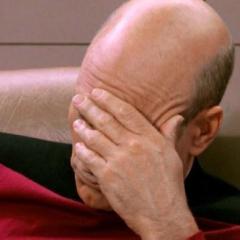Carbon Tweezer for people within the EU ...
-
Recently Browsing
- No registered users viewing this page.
-
Topics
-
Posts
-
By Neverenoughwatches · Posted
Thanks for the reply Andy, I will take a look . -
By nickelsilver · Posted
I don't think @praezis / Frank actually has a website. If you want his software message him and you'll get the info. I've used Witschi LCD and Vibrograf paper machines since last century, and it really is the best of both worlds. Picks up anything, however dirty (looking at you Witschi), with a readable result. If you pay for the pro, it tells you exactly where the poise error is for dynamic poising, and it's damn accurate. I can't speak highly enough about this software. Some mics don't work, some do, you might have to solder something, but in all the above Frank can help with a solution. And it's unbelievably affordable. -
By nevenbekriev · Posted
Well, as I have said not once, for the beginners in watchmaking, the hairspring, especially when there is overcoil, is the source of the most of the problems. This is the case here too. The end shake... I told You to regulate it by bending the cock. If it was done, then would be no wondering if the shim is seated correctly every time. You still have to understand how much end shake is normal and correct. One exercise for this purpose: remove the hairspring from balance. Put the balance in the movement with the cock. Use thin sharp pointed tweezers to grasp the balance staff where the hairspring collet seats and try to move the staff up/down. The amount of movement should be more or less as much as in escape wheel or pallet fork arbor. In the same time You will see how easy the balance rotates when it is free and without hairspring. Moving the balance up/down by holding it by the rim is not the same, as it forces it to tilt and some shaking may be result of the radial free play of the pivots in the bearings even if there is no endshake at all. Of course, You can grasp the roller too. You can also grasp the rim, but observe the staff movement, not the rim shake. One should be able to check and say if there is end shake and if it is normal without hesitation, no matter if the movements works well or not at all, and not to wonder if the reason for the not normal working is endshake. Now about the hairspring. You spring is touching somewhere. The fact that this slight lifting of the stud changed the situation proves it. The spring probably touches the arms of the balance, but You are the one that can look at the spring, so it is up to You only to find where it is touching. The spring should be parallel to the plane of balance and thus on equal distances from the cock or from the balance arms in every position of the balance when it rotates. The coils of the spring must not touch each other. The overcoil also should be parallel and not touching the cock. The spring should not touch (be on some distance from) the regulator pins or the stud bottom. All this must be true also in DU position, not only in DD. This is achieved by slight bending and twisting close to the stud or of the overcoil. -
By hofnerpres · Posted
Revue was a brand name owned by Gedeon Thomman - long history - 1961 they combined Vulcain, Marvin and some others then it gets complicated. Heavily into aviation instruments and also still assembling watches. Good website with history. Sellita movements and £1400. Back to work..... Thanks guys.
-









Recommended Posts
Join the conversation
You can post now and register later. If you have an account, sign in now to post with your account.
Note: Your post will require moderator approval before it will be visible.